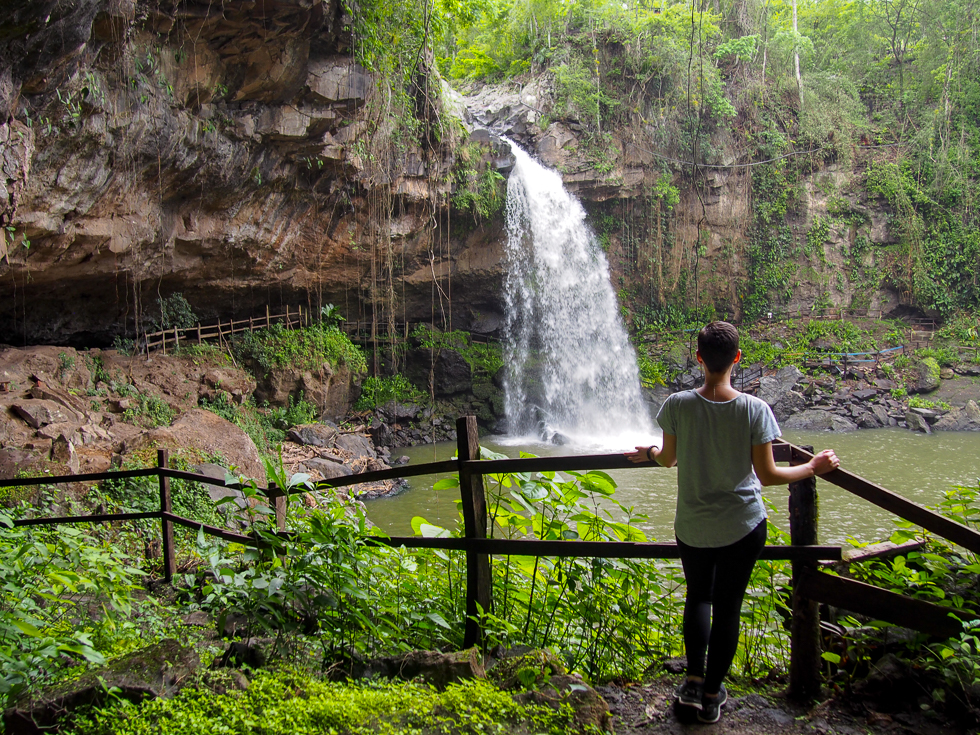
So I’m not going to lie: I freaking love Nicaragua. Since coming home from my Nicaragua trip I’ve been trying to talk about it without just gushing cliches (beautiful landscapes, kind people, overall fantastic country to travel in) but y’all – the cliches are pretty spot on here. I went to Nicaragua as a solo female traveler, and I found it to be warm, open, and easy to travel in. I also found Nicaraguans to be very approachable and welcoming, allowing me to forge some really fantastic friendships during my time in the country that gave me intimate and insightful windows into Nicaraguan life and culture. Nicaragua is one of my favorite countries that I’ve visited so far, and I would return in a second. And to aid you, whether a solo female traveler or simply anyone who is curious about what to expect from visiting Nicaragua, here is everything you need to know about traveling in this phenomenal country.
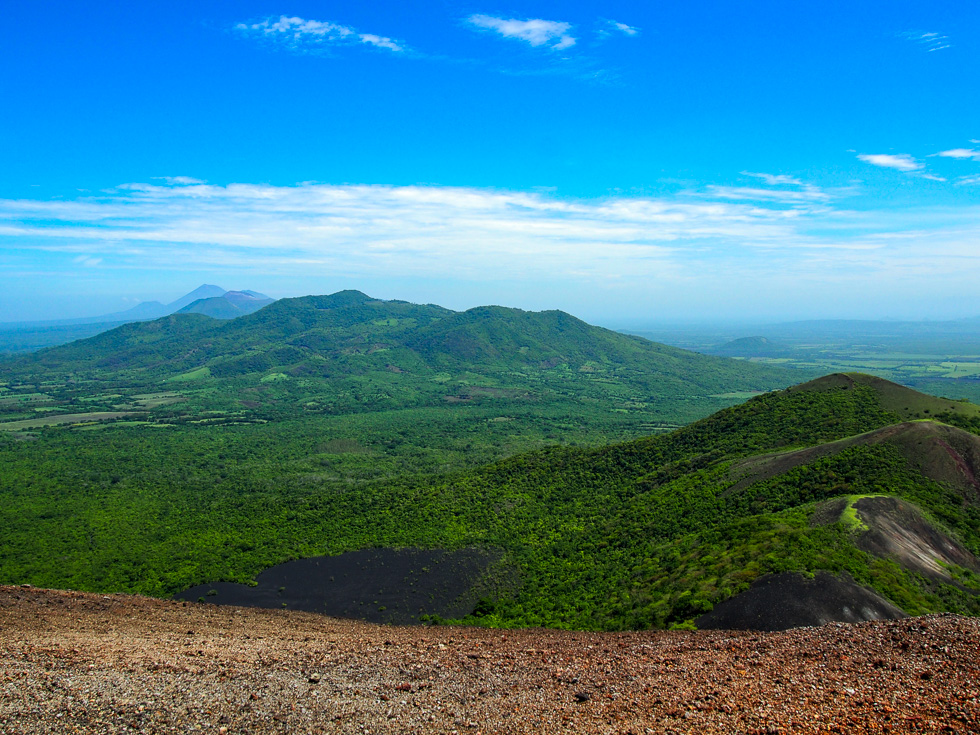
Note: this post may contain affiliate links. If you make a purchase through one of these links, I will earn a commission at no extra cost to you.
Nicaragua: history, politics, and general info
I always recommend studying up on the history, politics, and culture of a country before arrival, and Nicaragua is no exception. The many noteworthy chapters of its history have shaped its geopolitics today, such as its long period of colonization by Spain (1522 to 1821), its transition to an independent republic throughout the remainder of the 1800s, and its more recent occupation by the U.S. military (early 1900’s) followed by a U.S.-backed puppet dictatorship that lasted another 43 years, until the Nicaraguan Revolution. During the revolution in 1978, this dictatorship was overthrown by the Sandinista National Liberation Front (FSLN). The Sandinistas remain in power to date, and although the party emerged to liberate Nicaragua from an oppressive dictatorship, it has converted similarly into an oppressive, authoritarian regime.
It’s particularly important to understand the recent political history of Nicaragua, because the country has been drastically impacted by the recent political turmoil of 2018. During the spring of 2018, government announcements to cut (already meager) pensions and social security sparked waves of anti-government protests. These protests were met with brutal force and suppression by the state, resulting in over 300 deaths (though potentially more), thousands of injuries, disappearances, censorship of free speech, and other human rights violations. The turmoil in 2018 also dealt a major blow to Nicaragua’s economy. Many people fled the country, businesses closed, and the country lost virtually all of its tourists overnight.
I visited Nicaragua during June of 2019, more than a year after the protests broke out. I perceived some tension, politically. There has not been a change of government since the protests and the situation has not yet been resolved… it’s simply calmed down compared to the volatility of the previous year. From a touristic perspective, the country was very peaceful to travel in, and travelers should not be afraid to visit Nicaragua based on the 2018 events. In fact, I would argue that this is an important time to visit and invest in the country during a difficult moment in the rebuilding of its economy. However, travelers should note that occasional protests do arise, and for safety reasons I would advise travelers to avoid any protests.
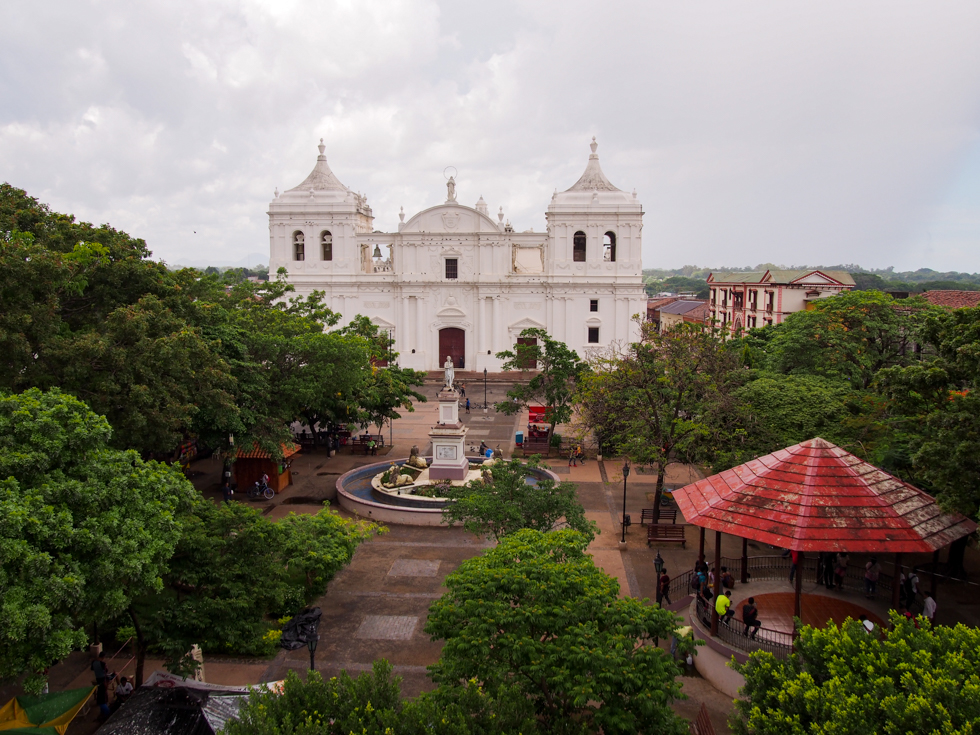
Places to visit in Nicaragua
There is so much to see and do in Nicaragua, and the country has a well-established tourist trail (although currently the number of tourists is fairly low due to recent political instability). During my visit, I spent time in León, Las Peñitas, Matagalpa, and Granada. Other popular tourist destinations include Ometepe, San Juan del Sur, Estelí and the nearby Somoto Canyon, the Little Corn Islands, and more. Nicaragua is a country with a vast diversity of natural features and cultural centers, though the majority of the major cities and sites are fairly condensed within the western portion of the country, making it an excellent destination for those who want to see and do a lot but who have a limited time to travel.
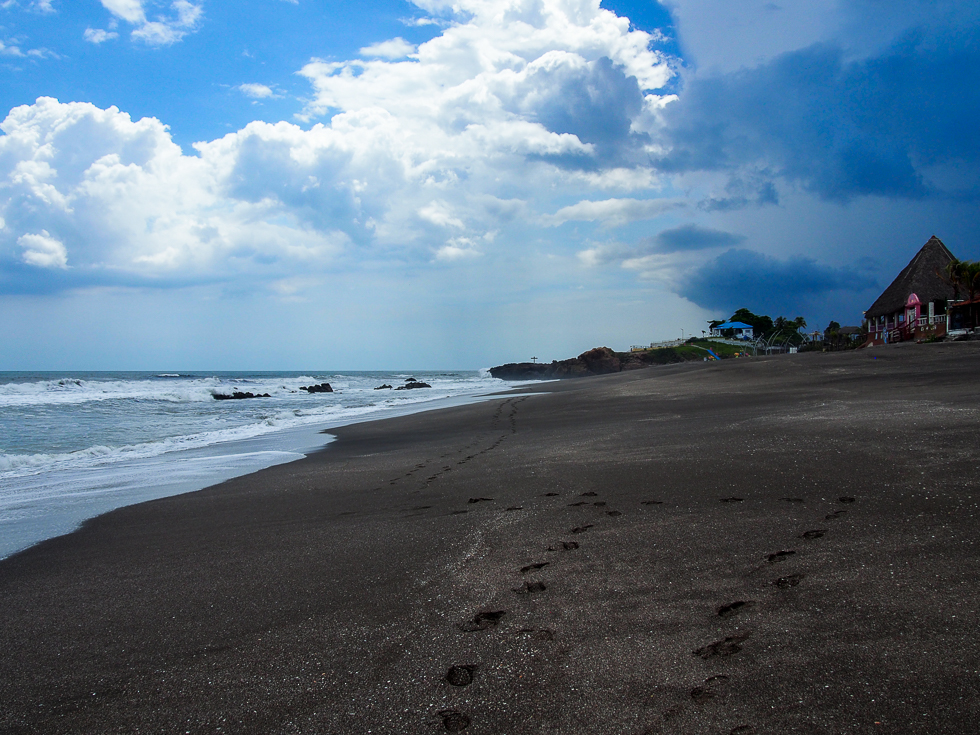
When to travel to Nicaragua
Nicaragua essentially has two seasons: the rainy season and the dry season. The rainy season lasts from about May through November, and the dry season from about December through April. Temperatures are slightly cooler during the rainy season, which is also the off-season for tourism. I visited in June, during the height of the rainy season, and I personally found this to be a great time to visit the country. Everything was green and lush, and it didn’t rain every day, in spite of the season. A typical rainy season day in Central America might mean a dry morning, a rainy afternoon, and then a dry evening (this was my experience basically every day when traveling in Guatemala in September of 2015, for example). I enjoy traveling in Central America during the rainy season, though note that if you travel during this time you should take extra precautions against mosquitoes (see the health and wellness section below).
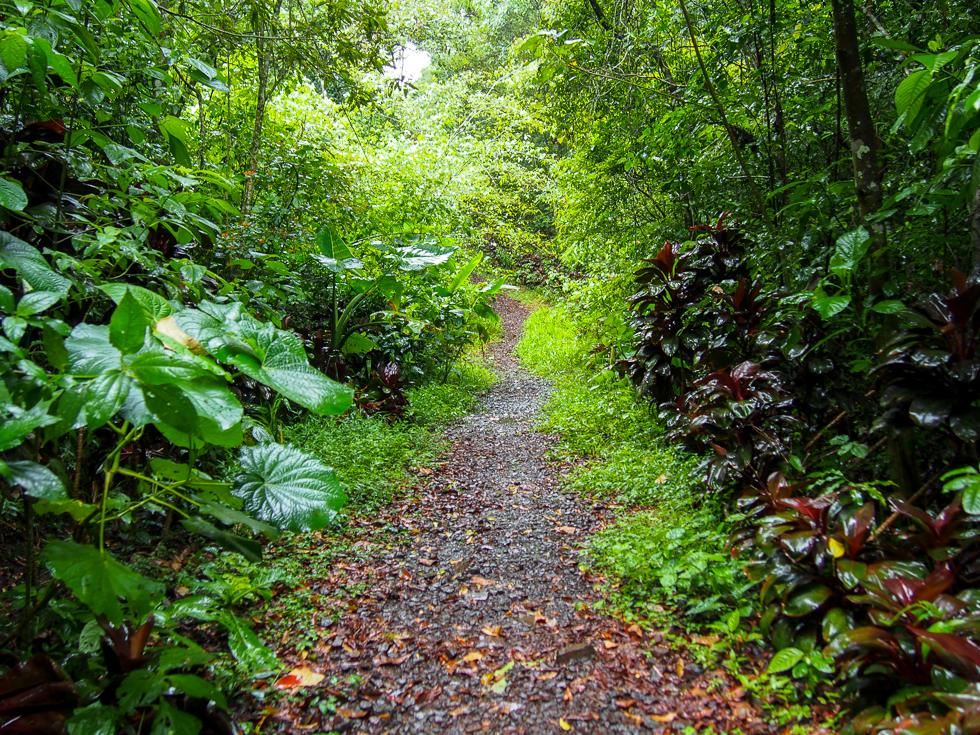
Language
Spanish is the official language in Nicaragua. Travelers will find it helpful to know at least some basic Spanish to navigate Nicaragua (especially as learning some basics of the local language is also an important part of being a responsible traveler!). As is common in many countries, travelers will encounter some English speakers, particularly those who work in tourism. Personally, I am fluent in Spanish, so I do not know what it is like to travel through Nicaragua while also navigating a language barrier. However, while in Nicaragua I met various female travelers, both solo women and not, who did not speak Spanish, and they seemed to be doing fine. Non-Spanish speakers may find it useful to travel with a Spanish language phrasebook, or to utilize Google translate in moments of language confusion.
Nicaraguan Spanish should sound fairly clear and understandable to Spanish learners, with some similarities in terms of grammar and vocabulary to other countries in Central America, particularly neighboring Costa Rica and Honduras. Note that the “tú” form is not used in Nicaragua – you can still use it and people will understand you, but Nicaraguans themselves do not typically utilize the tú form. In Nicaraguan Spanish usted is used for formal interactions, and the Central American vos is used for informal interactions.
Here are a couple of useful Nicaraguan Spanish words for the language learners in the room:
- Nica/nicas refers to a single Nicaraguan (nica) or multiple Nicaraguans (nicas) of any gender (ex: hay muchos nicas acá). It is also an adjective meaning Nicaraguan (ex: quisiera comprarme una tarjeta SIM nica).
- Tuani is Nicaraguan slang for cool (ex: ¡qué tuani!), and can replace your use of chévere/bacán/bacano/guay/chido/jevi/padre and the other 10,000 regionalisms that exist in the Spanish-speaking world for “how cool!”
- Deacachimba is another way of saying cool/great/awesome in español nica
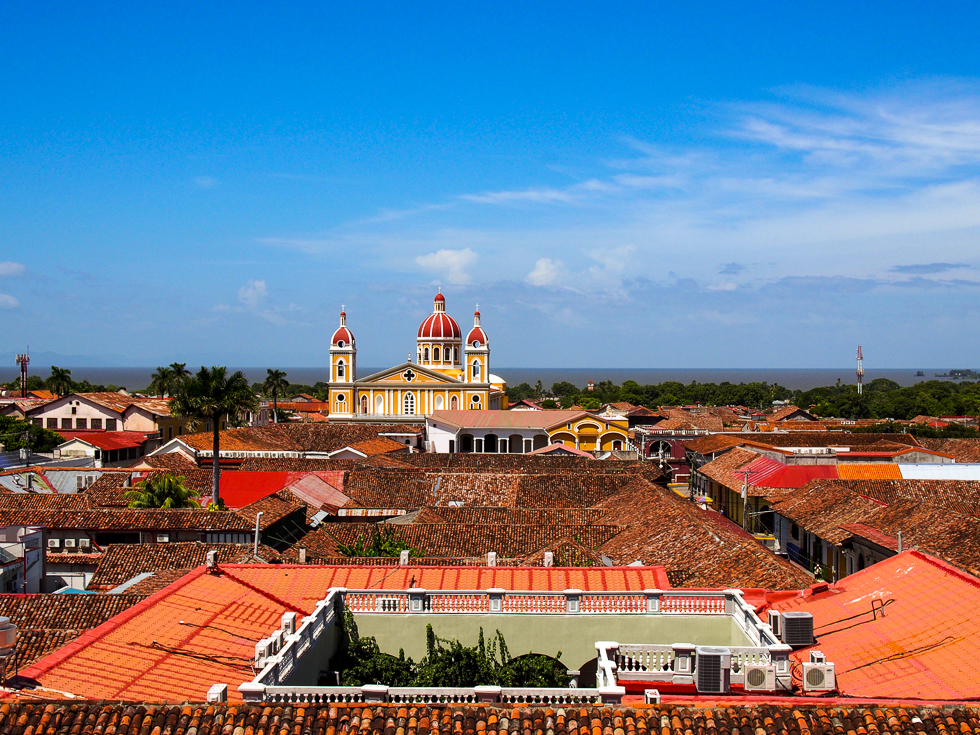
Safety in Nicaragua for solo female travelers
As a solo female traveler in Nicaragua, I never once felt threatened or unsafe. It was honestly one of the most relaxed trips that I have taken as a sola woman. Like anywhere in the world, women travelers will experience some catcalling and street harassment (though to be fair, the only place where I really got catcalled a lot was in Granada – in León and Matagalpa street harassment was rare). I particularly want emphasize how easy I found it to travel in Nicaragua because Central America as a whole gets a very bad rap in terms of safety, especially for solo female travelers.
All travelers, solo women and not, should take some safety precautions when going out at night, though this is not unique to Nicaragua or Central America. In my typical solo female travel fashion I did go out by myself at night in León and I was perfectly fine, but I do recommend making sure to take a taxi home if you will be out late, or going out with a buddy.
One safety tip that I utilize in all of my travels (not just in Nicaragua) and that I think is particularly important for solo female travelers is to have some access to a phone with internet and calling capabilities at all times. I travel with an unlocked cell phone (and you can find some relatively inexpensive, unlocked smartphones on Amazon that are perfect for travel) and upon arrival in any country I purchase a SIM card and some data and minutes. There is a Claro store in the Managua airport where you can purchase a SIM card and basic cellphone plan upon arrival in Nicaragua, and Claro stores throughout the major cities as well.
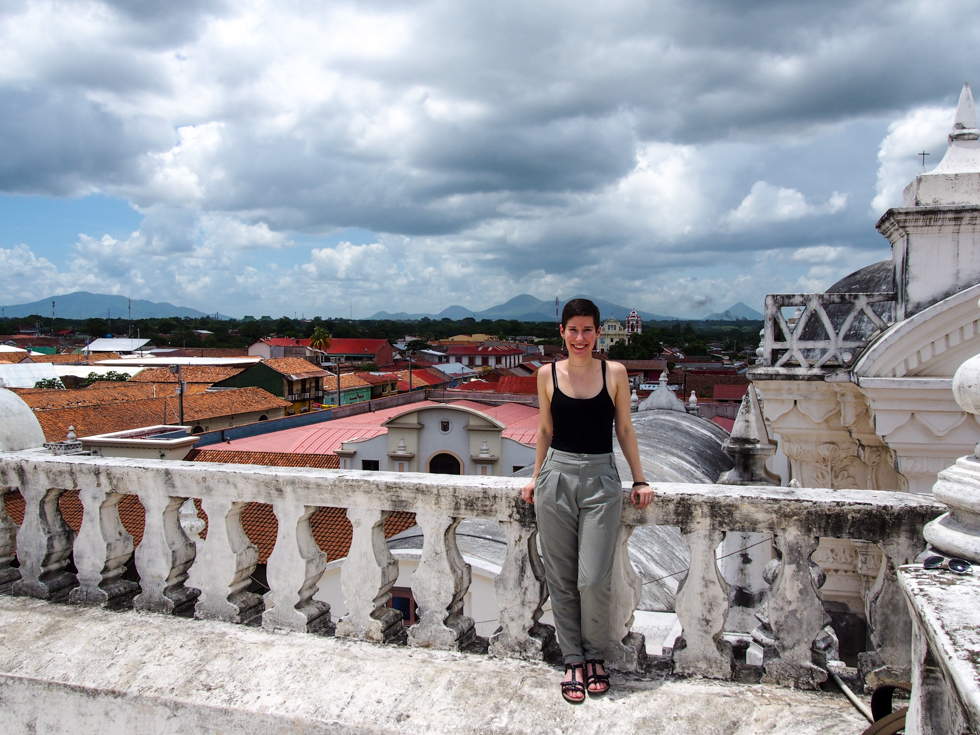
Safety in Nicaragua related to health and wellness
Nicaragua, like other countries in Central America, is a place where travelers should be mindful of certain health concerns, particularly related to food, water, and bugs.
Travelers should not drink the tap water in Nicaragua. Many hostels and hotels provide filtered water. I recommend bringing a Steripen or other water filtration device with you, so you can purify water on the go (I traveled with a Steripen and it really came in handy). Otherwise, bottled water is always an option. The term for “filtered water” in Nicaraguan Spanish is “agua filtrada”. If you order a drink in a restaurant, you will also want to determine if the ice is made from filtered water (“¿El hielo es de agua filtrada?”).
Food-wise, travelers should be careful with vegetables and fruit in Nicaragua, particularly raw. It’s good practice to stick to fruits and vegetables that come in a peel (bananas, avocados, etc.), are thoroughly cooked, or that you have prepared yourself. I learned this the hard way after (most likely) eating one too many raw vegetables, which caused me to wake up the next morning to a bad bout of food poisoning. The vegetables and fruit in Nicaragua can be challenging for travelers due to issues of contamination during their growth. Because of this, to kill any suspected bacteria Nicaraguans typically wash their veggies using chlorine (yep), before then rinsing them with water (which unless its filtered can reintroduced contamination to the food). Like I said, proceed with caution.
As for bugs, armor up with some insect repellent containing deet (also available at any pharmacy in Nicaragua) to protect yourself against mosquito bites. During the rainy season this is particularly important, as mosquitoes will be out in full force. There is little to no risk of malaria in the main touristic parts of Nicaragua, such as León, Granada, Managua, San Juan Del Sur, Ometepe, and other cities in the western half of the country, though there is a malaria risk along the Caribbean coast. However, even though the malaria risk is low for the bulk of the tourist trail in Nicaragua, there is a risk of other mosquito-borne diseases, such as dengue, zika, and chikungunya. In retrospect I would also bring some insect repellent bracelets for extra protection.
Travelers should also be up to date on all routine vaccines before traveling to Nicaragua, as well as the recommended vaccinations for Typhoid and Hepatitis A. Yellow fever is not a risk in Nicaragua, but the yellow fever vaccination is required if you travel to Nicaragua from a country with a risk of yellow fever.
Also note that if you do get sick while traveling in Nicaragua, there are doctors who make house calls! If needed, ask staff in your hotel or hostel to connect you with a doctor.
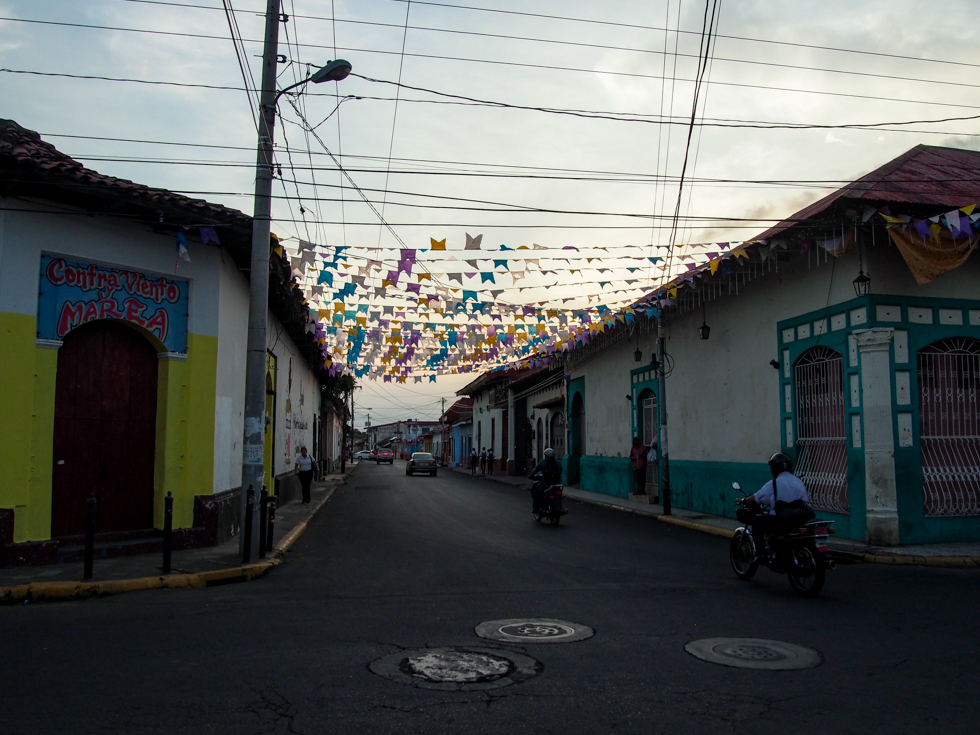
Currency and travel costs in Nicaragua
The local currency is the córdoba. As of June 2019, the conversion rate is about 33 córdobas to 1 USD. Travelers from western countries will likely find that their money goes quite far in Nicaragua. Hostel beds typically cost between 300 and 700 córdobas (approximately 9 and 21 dollars, respectively, for dorms versus private rooms). A meal in a higher-end restaurant may cost around 200 córdobas (approximately 6 dollars) and a local beer (try Toña and Victoria Clásica!) costs around 35 córdobas (approximately 1 dollar).
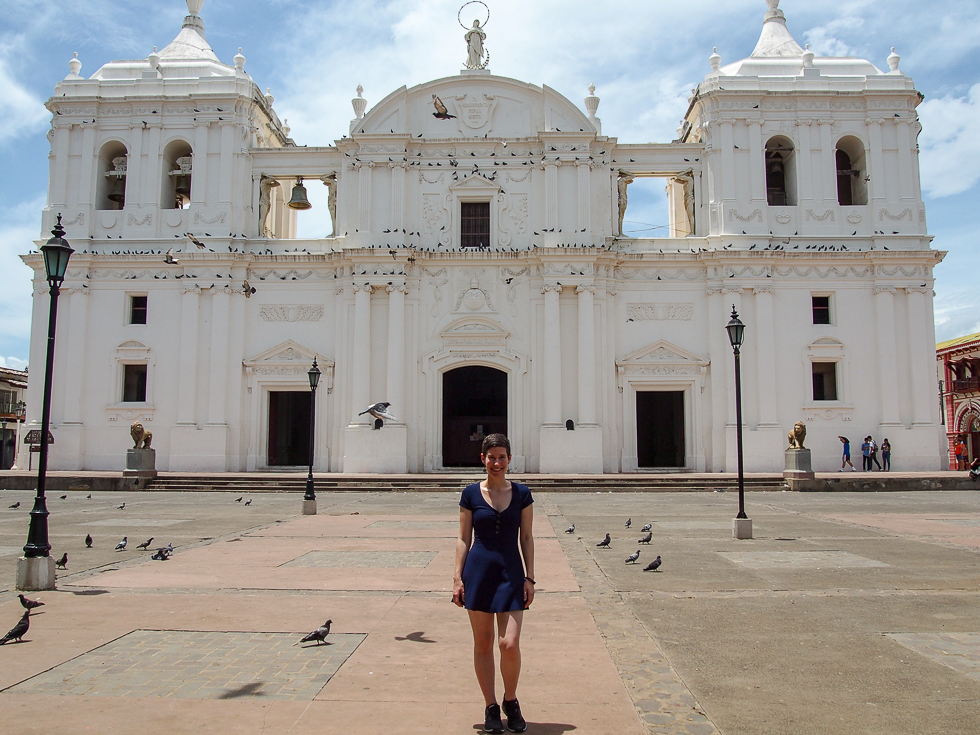
Getting around in Nicaragua (via planes, buses, and taxis)
International travelers can arrive in Nicaragua one of two ways: by plane, typically into Managua, or overland from neighboring Costa Rica or Honduras. Managua is easily accessible to many major nearby cities: it is only 1 hour away from Granada, 2 hours from León, and 3 hours from Matagalpa.
Once in Nicaragua, there are essentially two mains ways to get from city to city. Travelers can take local buses, or private or semi-private shuttles. Shuttles are obviously more expensive, but they may be a good option if you’re pressed for time or simply aren’t looking to rough it on public transit. For shuttle information, see Bigfoot Hostel’s shuttle service.
I went from city to city via public buses, which was a good option for me. Public buses range in size and comfort level, from small colectivo buses that fit about 15 passengers and depart when full, to large chicken buses (retrofitted school buses from the U.S. that serve as public buses for local transit). I enjoy riding local buses when I travel, and my trip to Nicaragua was no exception. Taking public transit can be a good opportunity to connect with local people, and it provides travelers with some insight into everyday life in Nicaragua.
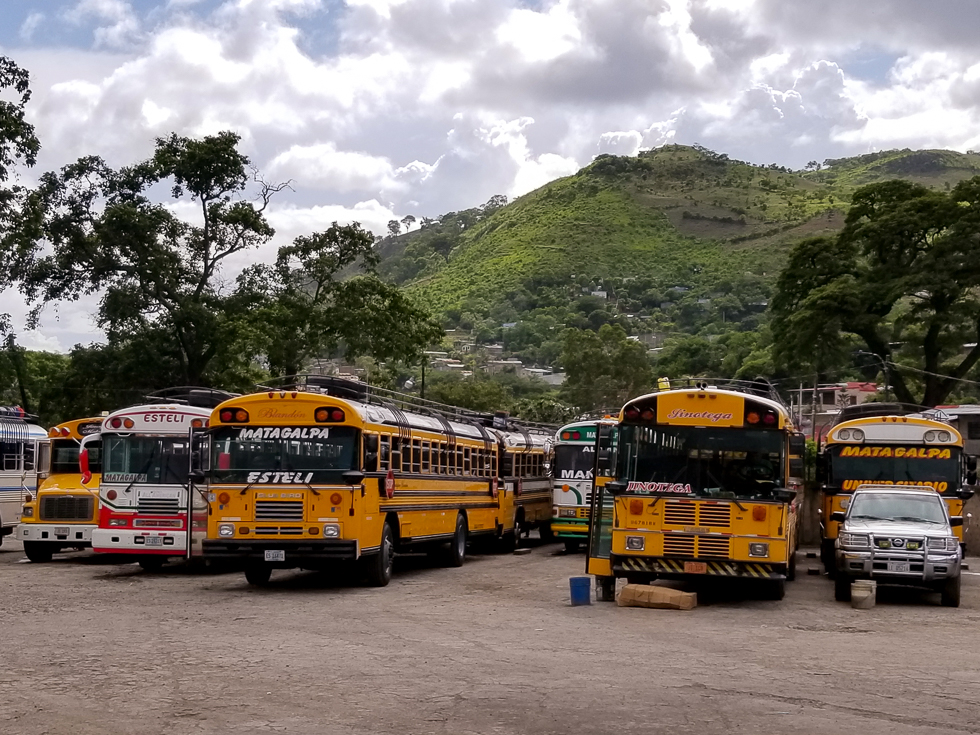
A few things to note about the public buses. Buses between Managua and León, as well as Managua and Granada, leave throughout the day, typically every 20 minutes or so (though note that the buses stop running around 7:00 or 8:00 p.m. – make sure to confirm the time of the last bus if you’re planning on traveling in the evening!). Buses between other, smaller cities typically have set times. For example, there are only three buses per day that leave from León to Matagalpa: two very early in the morning and one mid-afternoon. Keep this in mind when traveling between any non-major cities, so you can plan your day accordingly. Also note that if you have a large bag or backpack you may be charged extra for your bus fare, particularly if your bag takes up an extra seat.
As of June 2019, here are some inter-city bus prices for travel in Nicaragua:
- Bus from Managua UCA Terminal to Granada: 33 córdobas
- Bus from Managua UCA Terminal to León: 71 córdobas
- Bus from León to Matagalpa: 100 córdobas
Otherwise, within the cities I recommend taking taxis. Taxis in Nicaragua have a fixed price (in León the cost of a taxi ride is 30 córdobas, in Matagalpa it is 15 córdobas, as of June 2019). One interesting thing to note is that taxis in Nicaragua function as rideshares. Let me explain: before getting into the taxi, you tell the driver where you’re going. If they are heading in that direction they will agree and you can get in, if not then you need to wait for another taxi. Multiple riders will get into the same taxi, and the driver will drop each off at their destination. Something to keep in mind particularly if you are pressed for time, as your route between point a and point b may not be direct.
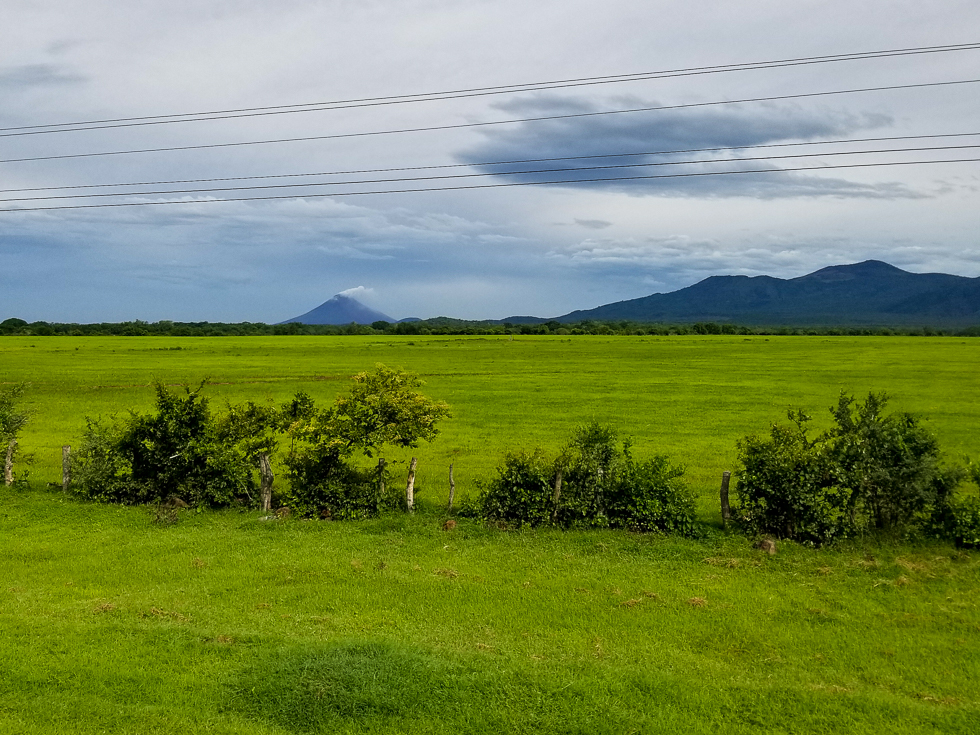
Other important things to know about travel in Nicaragua
I definitely recommend asking your newfound nica friends their opinions about politics in Nicaragua, as it’s a good way to gain a variety of perspectives about the political situation in the country – and generally, talking about politics is interesting and important! However, note that due to the authoritarian nature of the current government and the fact that the previous year’s political turmoil is not fully resolved, many people will not be comfortable discussing politics in public spaces. Be conscientious of this and talk politics behind closed doors.
LGBTQIA+ travelers should note that homosexuality in Nicaragua is legal (gay marriage, however, is not). It was my perception that queerness is still misunderstood in Nicaragua, and LGBTQIA+ couples traveling together may not feel comfortable with public displays of affection. Managua has a couple of gay bars, and LGBTQIA+ travelers should check out this resource with queer-friendly accommodation listings throughout Nicaragua. Also note that there is a total ban on abortion in Nicaragua (check out my tips for sexual health while traveling for resources on pregnancy prevention and more while traveling). Finally, disabled travelers may find travel in Nicaragua to be challenging, especially as city streets are often cobbled and jagged and many establishments contain stairs. See this resource related to accessible travel in Nicaragua, and this listing of wheelchair accessible hotels.
I also want to recommend a local tour guide/organization here: Nicaragua Explorando. This group is entirely nica-run and led, offers tours in English, Spanish, and French, and is based in León but offers services throughout Nicaragua. I suggest you check them out, whether you want help with trip planning or are looking for a guide to take you up a volcano. Definitely recommended.
Finally, have an amazing trip! Nicaragua is a fabulous country with so much to offer, and I hope you enjoy it as much as I did.
For León-specific insights, don’t miss my travel narrative about the impactful time I had in the city, and this resource about salsa dancing in León.
Is Nicaragua on your bucket list? Would you visit Nicaragua as a solo female traveler? Have you traveled elsewhere in Central America as a solo female traveler? If so, what was your experience? Let me know in the comments below!
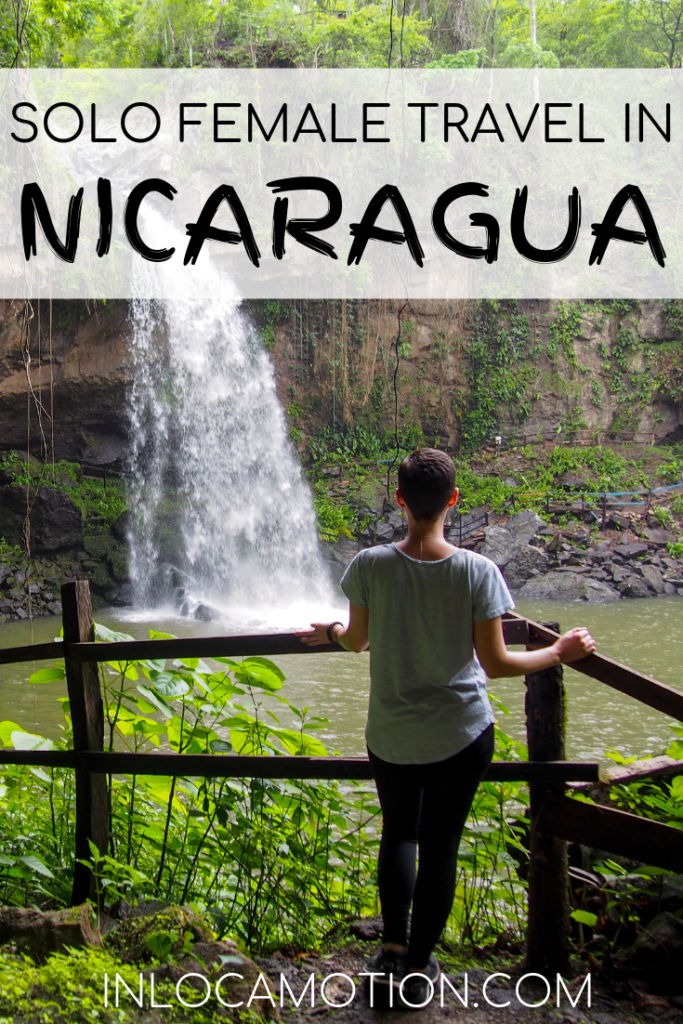









20 comments
WOW. You write so informatively and beautifully. Just lovely. Thank you for your interesting insights into Nicaragua.
Thank you so much, Carolina!! I’m so glad that you enjoyed the post and found it informative 🙂
I loved Nicaragua when I was there with my partner and I can’t wait to go back as a solo female traveler. I agree with you, it definitely helps to know some Spanish – it goes a long way with getting to know the locals too! Great post.
So glad to hear that you had a great time in Nicaragua, and I hope you get to make it back for some sola adventures! Thanks for reading and for your positive feedback Erika 🙂
I’ve been wanting to go to Nicaragua! Thank you for the tour information!
You are welcome! I hope you can make it over there! Thanks for reading and commenting, Kay 🙂
Such great safety tips, it’s so important for us as women to have all the information we can get when we do solo travel. Thanks for recommending a good guide too!
I’m glad that you found it useful. It’s really the only safety tip that I stand by – I honestly think that safety is so much about luck. And you’re welcome for the guide recommendation! Thanks for reading and commenting, Natasha.
Went to Nicaragua in 1985 and dying to go back. It was 6 years after the revolution and there was so much hope in the country. we went as an openly LGBTQ group and there was much controversy in the US about us going. And, some of the Central America solidarity groups were against us going. The Nicaraguans accepted us just fine.
Hi Sue! Thanks so much for sharing your experience in Nicaragua. I’m so happy to hear that you had a very positive experience in the country, and I hope you get to go back at some point soon! I’m curious to hear your perception of how it has changed since then. Thanks so much for reading and commenting 🙂
This is so helpful. Thanks for writing about solo female travel and expressing how easy and safe you found Nicaragua. I’ve not been there yet but it’s good to know I can travel solo.
I’m so glad to hear that you found it useful! Thanks for reading and commenting, Nicola 🙂
This is such a helpful and super comprehensive guide of Nicaragua! I’m pinning it for reference for later.
Thanks for including the history, recent history, politics and safety observations for solo female travelers too.
I’m so glad you liked it! And yes, talking history and politics is a must – to sweep them under the rug would be dishonest, I think, and reductionist as well, since they so drastically shaped day to day life in any country. I’m glad that you appreciated that aspect of the post in particular. Thank you for reading and commenting, Jyoti 🙂
This is most comprehensive guide on Nicaragua that I have read so far. And I am glad you make so many points for facilitating solo female travel in Nicaragua.
The country looks beautiful especially Granada and Leon. And the best part is there is so much history there. Plus it is full of greenery. Will keep in mind the Nicaraguan Spanish words when I visit here.
Woo, I’m happy to hear that you’ll put those words to good use! haha. Thanks so much for your positive feedback, Soumya! Definitely if you like cities full of history and rich culture, I’m sure you’ll enjoy Leon and Granada. I hope you love it when you make it over there 🙂
Nicaragua is my dream destination. I always wanted to be there. Thanks for your amazing travel guide with so many beautiful photos.
You’re so welcome!! I hope you get to go at some point and that you love it!
Hi, I am Nicaraguan and I can only agree with all you have written here so far. I do not live in my country but I visited Nicaragua last year too after the events of 2018. I was sad to see how it had changed compared to 2017, when it was full of tourists and businesses and shops for the tourists. I can only say, Nicaragua is really the safest country in Central America. I always travel there as a solo female cuz all my family lives abroad and I have never had any problem so far besider the classical catcalling on the streets which can really get on your nerves sometimes and if you get to know any Nica man, (which you will if you are there for longer than two weeks) then make sure you clearly friendzone him from the beginning to avoid misunderstandings. They are very flirtatious and Don Juan-like. I mean, if you are interested, go ahead! But if you are not into it draw the line as soon as possible. Usually Nicaraguans are very humble and friendly people, very curious about foreigners and interested in their culture. Right now the mood is kind of sad in Nicaragua due to the trauma of 2018 but Nicas are always in for a round of beers. Don´t be afraid to go there. Actually, what you will see is a country going through its own version of the Arab spring. There´s hope in the air.
Any suggestions on where to stay at San Juan del Sur? Love your writing! I’m going in feb.. where else must I visit? I’ll be there around 3 weeks..